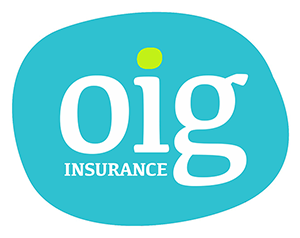It is estimated that between one-third and one-half of all businesses have no business interruption insurance. Almost half of businesses that experience a serious loss never reopen…over one-fourth of those that do, close within 3 years. A major reason that many businesses don’t survive a serious loss is the lack of business interruption insurance or inadequate limits of that coverage.
Most businesses carry “fire insurance,” as it is commonly called (though fire is just one of many perils covered by business insurance policies. Such insurance is usually required in order to get a mortgage on a building or to secure a loan using property as collateral. However, it is estimated that between one-third and one-half of all businesses have no business interruption insurance.
A major reason that many businesses don’t survive a serious loss is the lack of business interruption insurance. What is business interruption insurance and why is it needed? As an analogy, most individuals need at least three types of personal insurance. First, they need life insurance in case they meet an untimely demise. Second, they need medical insurance in case they have an extended illness or injury. Third, they need disability income insurance to offset their lost income while ill or recuperating from injury.
A business also needs these same three types of insurance coverages. The first two are provided by commercial property insurance which, like life insurance, pays for direct damage to property if it is totally destroyed by a covered peril. Like medical insurance, commercial property insurance also pays for the cost to repair the property if it is only damaged and not completely destroyed.
The insurance coverage that is often overlooked is business interruption insurance which is comparable to disability insurance in that it pays for the business’s loss of profit and expenses that continue while the business is not fully operational during repair or relocation following a loss. Almost half of all businesses that experience a serious loss never reopen their doors and over one-fourth of those that do, close within 3 years. Again, a major factor in such business failures is the lack of adequate business interruption insurance.
Business income insurance covers three types of losses or expenses that occur while the business’s operations are interrupted or curtailed: (1) loss of profits, (2) continuing expenses, and (3) extra expenses. In addition to its loss of profits, a business must continue to pay some bills whether its doors are open or not. Some businesses will incur extra expenses in order to remain open at a temporary location. Business interruption insurance pays for these losses and costs.
Business interruption insurance is offered within two major types of business insurance packages. First, half or more of all businesses are eligible for “Businessowners” policies. These are package policies that incorporate many of the most commonly needed insurance coverages. Most “BOP” policies, as they are often called, include business interruption insurance without any specific dollar limit, but rather a time limit which is typically 12 months. Following major disasters, a year’s worth of virtually unlimited coverage can mean the difference between survival and business failure. Unfortunately, not all businesses are eligible for a BOP policy, not is it appropriate for all businesses.
BOP policies are typically limited to smaller, low-hazard retail or service businesses. Other businesses are usually insured under a Commercial Package Policy, or “CPP.” These packages are much more flexible than BOPs because they include many optional coverages not available under a BOP policy. A downside, though, is that the coverages built into a BOP policy must be added separately in a CPP.
Business interruption insurance is a good example of such a coverage. Unlike a BOP policy where there is a time limit rather than a dollar limit, under a CPP, there is a dollar limit but no time limit for business interruption insurance. The biggest problem with this approach is that many business owners grossly underestimate the amount of coverage they need during the coming year.
To determine the proper limit, the business owner must determine, in the event of a total loss, how long it would take to rebuild or relocate and restore operations to their pre-loss level. Next, he or she must determine what would be the worst time of year for such a loss to occur, how much profit would be lost, and what expenses would continue or increase during that specific time period.
If the business is new or rapidly growing, the business owner can easily underestimate the amount of insurance needed and, as a result, incur penalties for underinsurance built into the policy. For situations like this, business interruption insurance often includes options that eliminate to some extent, and for a price, the underinsurance penalties in the policy, though the limit itself may still be inadequate.
Also, keep in mind that, after the business reopens its doors after several months, the level of business will almost certainly not be the same. However, business income insurance normally stops as soon as the business is fully operational again, regardless of the income stream at that time. Therefore, the business owner may need to purchase what is called an “extended period of indemnity” coverage. This pays the difference between what the business would have earned if it had never had a loss and its actual depressed income stream while it rebuilds its customer base.
One of the reasons some business owners don’t purchase this coverage is because, as you can see, it can get rather complicated. That’s why it is important to seek the counsel of a good independent insurance agent who is experienced in placing commercial insurance.


